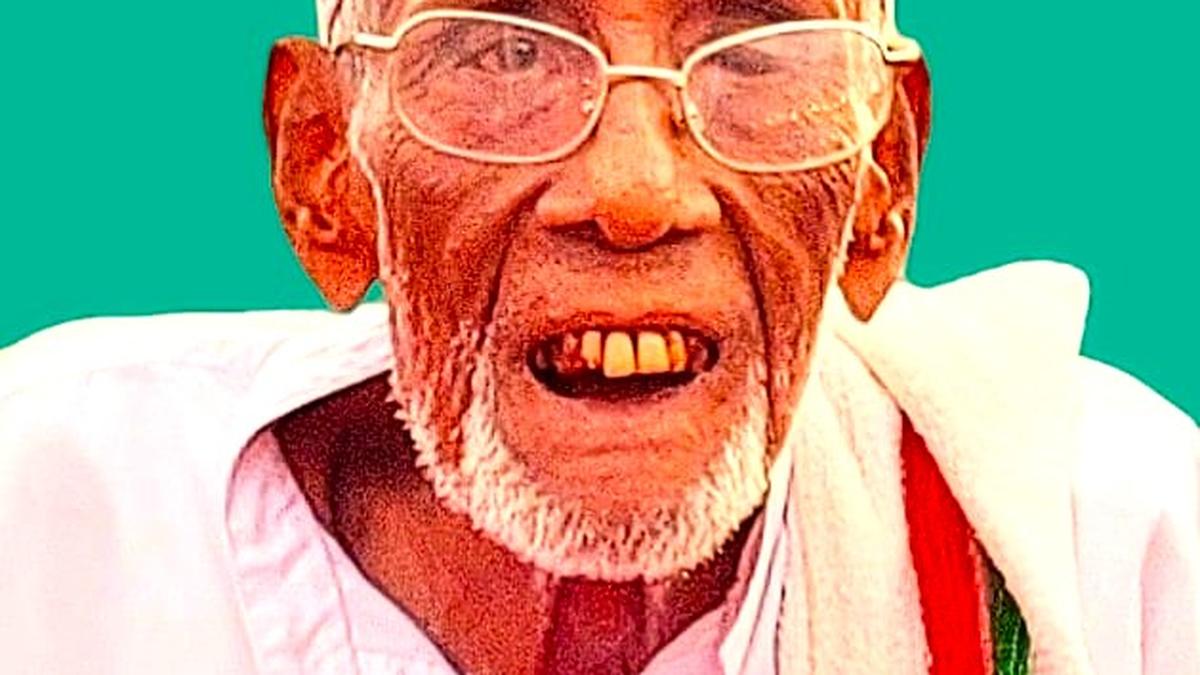
Abdullah, the last of the Ossans, passes away at 105
The Hindu
The death of Ossavattath Abdullah at Chaliyam near Kozhikode on Saturday night has formally scripted the end of a tribe that excelled in the practice of circumcision in Malabar. A hard-core nationalist and Gandhian till his death at the age of 105, Abdullah was the last of the Ossans, who circumcised thousands of Muslim boys in and around the coastal village of Chaliyam in the traditional style using crude instruments.
The death of Ossavattath Abdullah at Chaliyam near Kozhikode on (June 29) Saturday night has formally scripted the end of a tribe that excelled in the practice of circumcision in Malabar. A hard-core nationalist and Gandhian till his death at the age of 105, Abdullah was the last of the Ossans, who circumcised thousands of Muslim boys in and around the coastal village of Chaliyam in the traditional style using crude instruments.
Ossans are the traditional barbers among Muslims in the State, who specialised in circumcision. In the eastern parts of Malabar, particularly in some areas of Malappuram, they are called Othans. The word Ossan or Othan is believed to have been originated from the Arabic word Khathan, which means an expert practitioner of circumcision. The Ossan women, called Ossathi, were traditionally engaged in midwifery.
Children dreaded Abdullah as he walked along the gullies and lanes of Chaliyam, Beypore and Kadalundi in the last six decades of the 20th century. They perceived him as a sadist who always carried a blade in his pocket. But the same children, when they grew up, showered him with accolades for what he was. And they affectionately called him Abdullakka as he aged to become the oldest man in Kadalundi panchayat.
“I was circumcised by him, like the innumerable men, dead or alive, in Chaliyam, Kadalundi, Karuvanthuruthy and Mannur areas. His death marks the passing of a legend,” said M. Abdul Kabeer, a social worker from Kadalundi.
The dawn of the 21st century marked the death knell of the traditional circumcision as well as its practitioners. From the late 1930s to the early 1990s, Abdullah was a much sought after circumciser. As the population grew, his demand too increased. And he had his share of risky encounters too. There were some cases of hospitalisation following bleeding after the circumcision. “But they were nothing big considering the number of circumcisions he did successfully,” said Mr. Kabeer.
The children of the new generation found inspiration from the stories he shared about his salad days as a Gandhi aficionado. Abdullah was 15 years old when he walked all the way up to Kozhikode to have glimpse of Mahatma Gandhi when he visited Kozhikode in 1934. He had walked along with Gandhi through a narrow lane in Kozhikode, which, according to him, later became Gandhi Road.
Abdullah’s used to be a regular face at Chaliyam saluting the tricolour on the Republic and Independence days. The influence of Gandhi and Mohammed Abdurahman Sahib were so deep in him that his face would redden whenever he is reminded of the freedom struggle. The Congress had felicitated him at a function held in Kozhikode a few years ago.

 Run 3 Space | Play Space Running Game
Run 3 Space | Play Space Running Game Traffic Jam 3D | Online Racing Game
Traffic Jam 3D | Online Racing Game Duck Hunt | Play Old Classic Game
Duck Hunt | Play Old Classic Game











